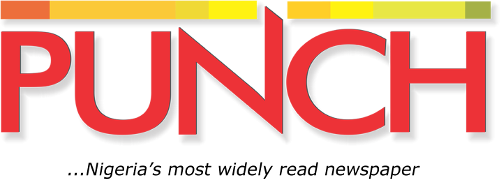
In this interview with GODFREY GEORGE, economist and Chief Consultant of BAA Consult Associates Limited, Dr ‘Biodun Adedipe, looks into the case of trademark infringements in the business space and how the government can curb this menace threatening the intellectual property space
What exactly is trademark infringement in branding?
Trademark infringement is the unauthorised use of a trademark. The keyword there is ‘unauthorised’. The problem is not about the use but whether or not the use is authorised. Some people see a brand they like and just adopt the name without the authority of the real owner of the brand. Sometimes, a brand owner would receive calls from another country asking them if their company is the one that authorised a transaction, which another company which adopted that name, has initiated. Oftentimes, you would find out that there is confusion along the line.
When we talk about infringement, it is better to draw a line or background as to what really a trademark is. There are four perspectives I would look at that from. In the generic sense of it, there are three basic points. It can be a symbol that represents a brand. It can also be a word or a combination of words. This means a trademark is a symbol or combination of words that define uniquely the entirety of the brand or an enterprise. This means it represents that particular company or its products. When it comes to business law, it goes a little bit further. Here, that symbol has to be recognisable as identified uniquely with either the company or its products. In economics, we look at it broadly as an easily recoginsable symbol, word or group of words that denote a specific product. We look at it beyond just the company but also with the product. Because in economics, the discourse is that a company has an array of products, and each of those products can be unique in its own way. In fact, when we do the analysis, we usually split products into cash, cows, stars and dogs, which stand for different things. The critical thing here is that a trademark is recognisable.
If you take a brand like Nike and you come across the phrase ‘Just do it’, you will know that it is recgonised all over the world as a phrase identifiable with Nike. Once there is a basic understanding of the trademark, it would be fairly easy to negotiate a case of infringement from three perspectives. What is the nature of the trademark? What is the identity? The third point is the interpretation, which is the final point.
If another brand can just adopt an existing brand’s trademark without the person’s permission, don’t you think it may create an avenue for fraudulent practices?
Exactly. As a business owner, if you receive a call from a bank, for instance, who may have confused your brand name or trademark with that of another for any reason, then that may lead to a much greater problem of confusion. This may further lead to fraud. That is why we say that any ‘unauthorised’ use of a trademark by any other person other than the original owner of the trademark, would amount to an infringement.
In the light of your explanation, what can you say about the lawsuit filed by Coca-Cola accusing Pop Cola of brand ‘cloning’?
The brand of an enterprise is its unique identity. When we talk of unique identification, when you pick up a brand, there must be some elements that will make you identify that entity, brand or individual. If any of those elements are replicated in another brand that is a pointer. When you have many of the attributes represented in another brand, it becomes a proper argument for cloning business-wise.
The world economic forum every year conducts what they call a competitiveness evaluation index for countries. That is a basis for global investors to decide where to go put their money. There are 12 factors that talk about business innovation. Innovation is not about copying somebody else. It is not cloning. It means you should come up with something new from one or two perspectives.
How far has Nigeria fared in this area?
Do we encourage innovation in Nigeria? It is a very big deal because when we talk about research and development, Nigeria has not fared well. In the light of COVID-19 that impacted the economies of the world, a survey was done in 2021 – the third year of the pandemic – when many economies of the world had recovered and grown strongly. That survey showed that companies that had invested in research and development, especially with respect to deepening digitisation, were not only able to come out of the stress of COVID-19 but also strongly grow their profit. If you want to interpret that in layman’s terms, if a company invested in research and development that brought innovative ideas and products, ideally the reward or return on that investment should come to that company. If somebody else copies what they did, it means the return is split between the company that invested and the one that did not. This means if we would encourage companies in research and development, you must provide an environment that protects the return on such investments to the investors without other companies taking advantage of it. That is a major challenge for Nigeria. There is a ranking of countries with respect to that. Which country has the best protection for intellectual properties? Which countries have weak control? This is why in Nollywood, there are a lot of these issues. Someone makes something; another carries it and changes a thing or two and takes it out there.
The thing with Nigeria is that we have the relevant government agencies in charge of these things. We have the Nigerian Copyright Commission, which has this primary mandate. In the pharmaceutical space, the National Agency for Food Drug Administration and Control is there to play this role. We have other ministries whose responsibilities fall within this purview. Nigeria is also signatories to the treaties of World Intellectual Property Organisation. To that extent, we have all the necessary laws. Now, the problem with Nigeria now is the enforcement of these laws which are already available. If some of these laws are properly enforced, there are many cases that may not necessarily need to go to court.
There is also an issue of confusion between the two brands – Coca-cola and Pop Cola – in their appearance with the unique ribbon design, colour amongst other issues. What does this portend for Coca-cola as a brand?
This is a very important issue you raised here. In the scheme of things, what we say is that ultimately, when you present a product in the market, the idea is to show that prospective buyer that you have a solution to his/her problem. This is what we call the basic product. In the case of Coca-Cola and Pop Cola, which is a kind of beverage, the only way you prove the difference is in the taste. It is like what the Americans call the ‘cola wars’. The second key element is the packaging, which is how the product is presented to the consumer. There is something we call ‘perfect substitute’ in the economy, where you can buy one thing and not need to buy another. If I buy a bottle of Pop Cola, mistaking it for Coca-Cola because of the design, I may not need to buy Coca-Cola again, because my need of thirst has been met. They are mutually exclusive. To the consumer, the issue will not be the product, but the packaging which may be confusing. If I have Coca-Cola and Pop Cola presented to me, they look similar to a very large extent. As a consumer, naturally, there would be a measure of confusion. A confused consumer may begin to say, “Maybe, this is another variant of Coca-Cola. Maybe Coca-Cola is trying to do differentiation to align with different segments of the market. Maybe the pricing is different because the producer wants to attract a particular segment of the market.”
The confused consumer would give an interpretation to it and authenticates that product and choose one. Once there is this confusion and they repeatedly choose the one they have associated with the source or origin, then the owner of the trademark would begin to lose market share. As it loses market share, the other one is also growing and gaining. It is a possibility that more people would be attracted to the one they may see as cheaper. If that happens, it may appear that the market for that product is growing but the growth would be disorderly. It is even a lot more fundamental when we talk about finance and banking. When this continues in a country over time it creates an impression to international investors that it is not a country that you can go into to do business and have your trademark and financials protected.
How can this issue be curbed?
If any company infringes a trademark on another, the original company has the right to sue. The judgment would come not with sentiments but with the full extent of the law and the arguments of the solicitors from both sides. This is a major challenge we have had in many years. If government agencies, whose job is to protect the rights of these brands, perform their duties without sentiments, then we would have fewer problems on our hands. If these institutions are strong, it inspires confidence in both local and foreign investments. If an infringement on trademark happens and the entity, who does the infringement gets away with it, it doesn’t end there. What it sends out is a message that can become an incentive for other entities to violate trademarks of others as well.
Copyright PUNCH.
All rights reserved. This material, and other digital content on this website, may not be reproduced, published, broadcast, rewritten or redistributed in whole or in part without prior express written permission from PUNCH.
Contact: [email protected]




